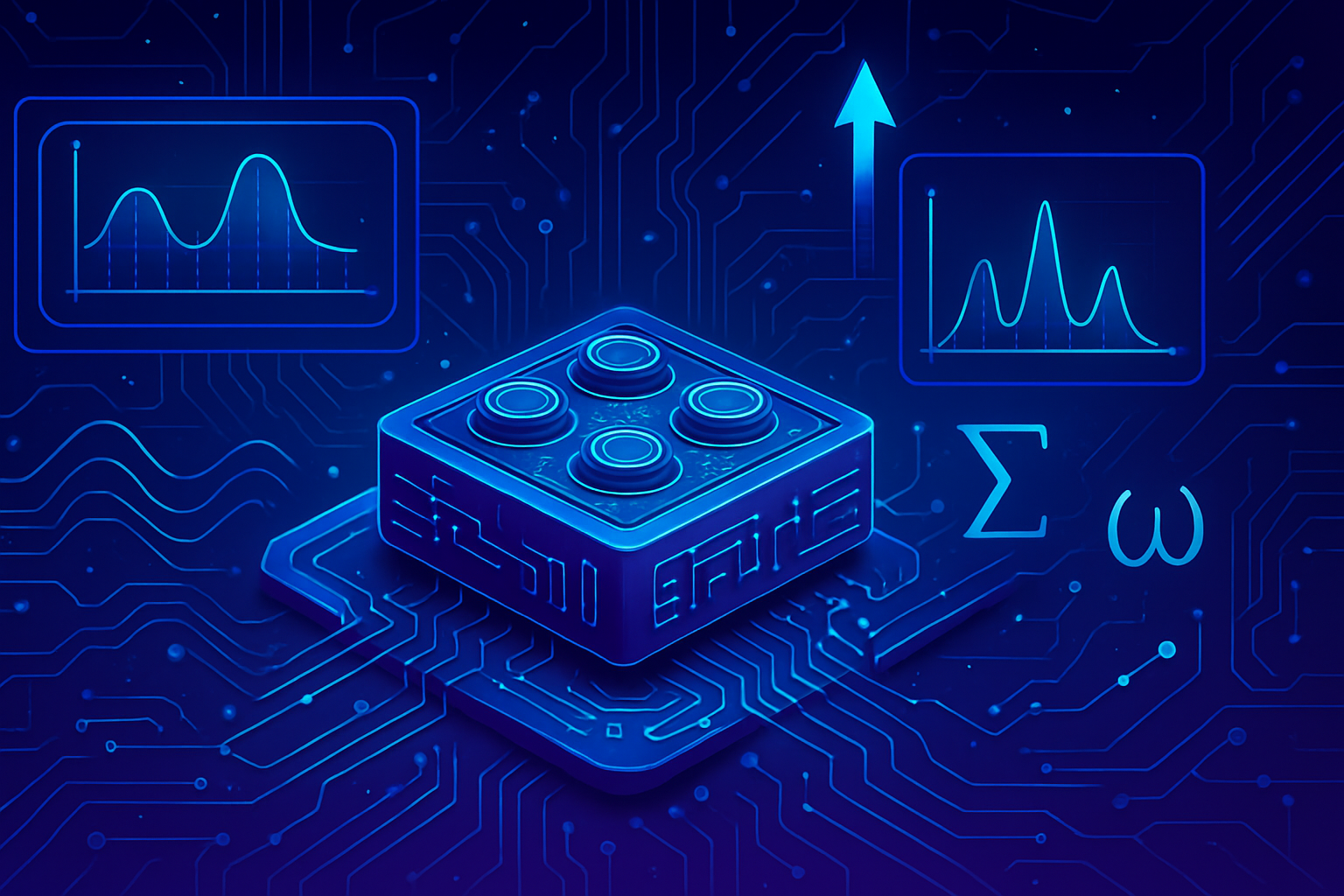The innovations in analog computing are revolutionizing our conception of computing, offering more energy-efficient solutions. The *scalability* of classical computing systems poses a challenge, particularly when components exhibit divergent behaviors at scale. An emerging approach, based on a *synthetic frequency domain*, allows for the integration of information within a single device.
This advancement proves crucial for overcoming the limits imposed by the multiplicity of physical components. *Optimizing the performance of computing architectures* while ensuring their reliability thus becomes feasible. Research conducted by experts in integrated phononics heralds a new era for analog computing systems.
Analog Computing Technology
Analog computing, which uses continuous physical quantities such as voltage or frequency to represent data, offers a superior energy efficiency compared to digital systems. However, scaling these systems proves complex, as components may react differently when integrated into large-scale configurations.
Research Advances
Researchers from Virginia Tech, the Oak Ridge National Laboratory, and the University of Texas at Dallas have devised a new approach, called synthetic domain, which enables information to be encoded at different frequencies within a single device. This advancement aims to facilitate the scaling up of analog computers without relying on a multitude of physical components.
This concept, detailed in an article published in *Nature Electronics*, has led to the development of a compact and extremely efficient analog computing platform based on integrated nonlinear phonons in lithium niobate. Linbo Shao, senior author, highlights the advantages of physical neural networks (PNNs) for applications in artificial intelligence.
Foundation of the Synthetic Domain Approach
The computing scheme in the synthetic domain presents an innovative method for processing large quantities of data, such as a 16×16 matrix, on a single device. This approach minimizes the errors often observed in analog platforms that combine multiple devices, thereby reducing inter-device variance.
Performance and Applicability
The strategy recently introduced by the senior team eliminates the need for additional physical components for the scaling of analog computing systems. The first PPN-based system designed with this method has shown remarkable results in classifying data into four categories.
Shao commented on the implementation of a neural network using one or very few acoustic devices. This synthetic domain approach could also be adapted to other emerging devices, even at preliminary stages of research and development.
Co-design and Efficiency
The co-design of the neural network and the device has improved accuracy in classification tasks to as high as 98.2%. This highlights the importance of this co-design for the overall efficiency of the systems.
Scaling Up
The work of Shao and his collaborators opens doors to a reliable scaling of analog computing architectures, capable of supporting machine learning algorithms while maintaining their performance. The team continues to optimize its approach, aiming to broaden the range of complex problems that their lithium niobate phononic devices can address.
New challenges remain to be met, particularly the integration of larger and more sophisticated neural network models. This research is part of a broader trend aimed at developing sustainable and efficient solutions in the computing field.
Common Frequently Asked Questions
What is an analog computing platform utilizing the synthetic frequency domain?
An analog computing platform utilizing the synthetic frequency domain is a system that uses nonlinear acoustic frequencies to encode and process data, thus allowing for better scalability without requiring the addition of extra physical components.
What are the advantages of using such a platform compared to traditional digital systems?
Analog computing platforms are generally more energy-efficient as they process data in the form of continuous physical quantities, such as voltage or frequency, unlike digital systems that use binary states, which can reduce energy consumption.
How does the synthetic frequency domain improve the scalability of analog computing platforms?
The synthetic frequency domain allows for the encoding of large quantities of data on a single device, thereby minimizing errors due to variations between devices in analog systems that require the integration of multiple components.
What type of mathematical operations can be performed on these platforms?
These platforms can perform complex operations such as matrix multiplications, thanks to nonlinear processes applied to acoustic waves on a lithium niobate substrate.
What are the potential applications of devices based on this technology?
Devices utilizing this technology can be applied in the field of artificial intelligence, particularly for the development of physical neural networks (PNNs) that require high precision in data classification tasks.
How can this technology influence the future of machine learning?
By improving the scalability and performance of analog computing architectures, this technology could allow for a more efficient execution of machine learning algorithms, paving the way for new solutions to complex problems.
Is it easy to integrate this technology into existing systems?
The synthetic domain method enables easy integration, even with a limited number of devices, as neural networks and devices are co-designed to maximize efficiency and accuracy from the early stages of development.
What are the potential limitations of analog computing devices using this frequency domain?
While promising, the technology is still being improved to overcome challenges such as the capacity to process larger and more complex neuron models and ensuring reliability in varied applications.






